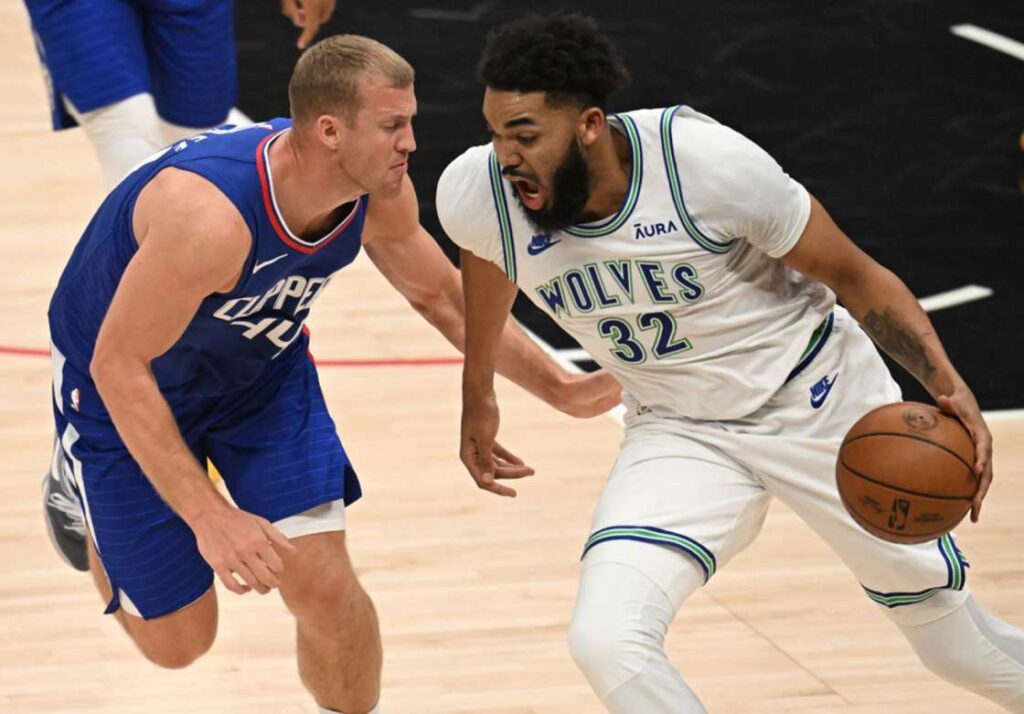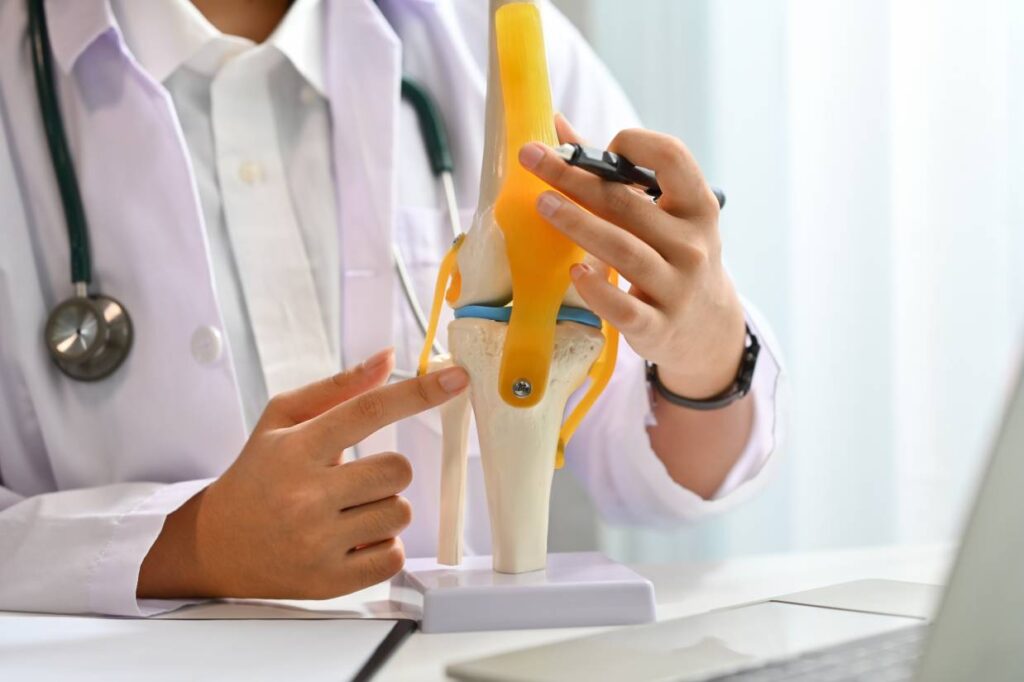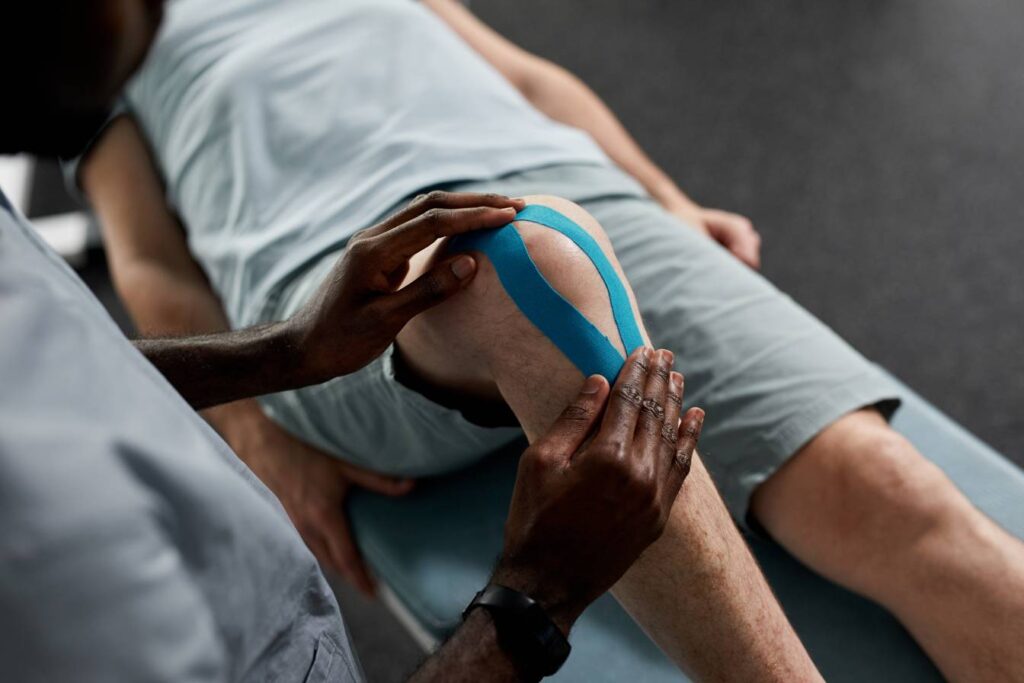Karl-Anthony Towns Injury Update – Meniscus Tear Takes NBA Player Out of Action

After playing only 21 minutes of the March 4 NBA game against the Portland Trail Blazers, Karl-Anthony Towns of the Minnesota Timberwolves injured his knee, taking him out of the rest of the game. A subsequent MRI scan revealed that he had torn his meniscus.
With playoffs only five weeks away, Towns will likely undergo surgery soon, hoping to get back on the court by mid-to-late-April. But that timeline only holds if he requires just a meniscus “trim.”
What We Know So Far About Karl-Anthony Towns’ Injury
Here’s an update on Karl-Anthony Towns’ injury: it came at a crucial time for the Minnesota Timberwolves. Here’s a breakdown of the situation:
Towns’ Performance and Importance:
- Towns was having a solid season, averaging 22.1 points and 8.4 rebounds per game. He’d just made his fourth All-Star appearance and was a key piece for the Timberwolves, who were surprisingly sitting at the number one seed in the Western Conference playoffs.
- Towns is a franchise cornerstone for the Timberwolves, a big man with a rare combination of scoring and shooting ability. His absence would be a major blow.
The Injury:
- The issue arose during a game in early February. Towns was initially listed as out with a sore left knee.
- However, further tests revealed a more serious injury – a torn meniscus in his left knee. This came just two games before the All-Star break, a time often used for players to recover from minor niggles.
Treatment and Recovery:
- Towns will be re-evaluated in the following weeks to determine the best option for his recovery.
- While initial reports suggested he might be back for the start of the playoffs, the recovery timeline for a full repair is typically 6-to-9 months. This would likely rule him out for the rest of the regular season and playoffs.
- Given the shorter timeframe mentioned (one-month re-evaluation), it’s more likely Towns had a meniscectomy (partial removal) which carries a 4-to-6-week recovery window. This could potentially see him return in the early stages of the playoffs, depending on the team’s performance in his absence.
Impact on the Timberwolves:
- The Timberwolves were just half a game ahead of the second seed at the time of Karl-Anthony Towns’ injury. His absence creates a huge hole, especially considering they weren’t dealing with many injuries throughout the season.
- The team will have to find ways to compensate for his scoring and rebounding, potentially needing other players to step up and fill the void.
- How they handle Towns’ absence in these next three games before the break and the following extended stretch will be crucial in determining their playoff seeding and overall success.
This injury is a significant setback for both Towns and the Timberwolves. While the possibility of a return during the playoffs exists with a meniscectomy, it creates uncertainty and puts pressure on the rest of the team to perform in his absence.

In-depth Discussion on Karl-Anthony Towns’ Injury
What is the Meniscus?
The meniscus is a ”horseshoe”-shaped, fibrocartilage structure in the knee joint that fits between the femur (thighbone) and tibia (shinbone). There are two menisci in each knee. One is located toward the inside (medial meniscus) of the knee, and the other is positioned toward the outside (lateral meniscus).
The meniscus serves to provide cushioning and stability to the knee. However, this specialized tissue is also prone to tearing when the knee is injured. Since the inner two-thirds of meniscus tissue is generally devoid of blood supply, meniscus tears usually do not heal on their own.
What is a Torn Meniscus?
A torn meniscus is a common injury that involves damage to one or both of the cartilage discs in the knee joint. This injury typically occurs when the knee is subjected to a forceful twisting, flexion or rotation motion while bearing weight, such as during sports activities or other sudden movements.
When the meniscus tears, it can cause a range of symptoms including pain, swelling, stiffness, and difficulty moving the knee. Depending on the severity and location of the tear, individuals may also experience catching, locking, or a sensation of instability in the knee.
Treatments for a Torn Meniscus
The treatment options for a torn meniscus vary depending on factors such as the severity and location of the tear, as well as the individual’s age, activity level, and overall health. Here are some common treatments for a torn meniscus:
- Rest, Ice, Compression, Elevation (RICE): Initially, following the RICE protocol can help reduce pain and swelling. Resting the knee, applying ice packs, using compression bandages, and elevating the leg can aid in the healing process.
- Physical Therapy: A structured physical therapy program can help strengthen the muscles around the knee, improve flexibility, and enhance stability. Physical therapy exercises may also focus on improving balance and coordination to support the knee joint.
- Medications: Nonsteroidal anti-inflammatory drugs (NSAIDs) such as ibuprofen or naproxen can help alleviate pain and reduce inflammation associated with a torn meniscus.
- Orthobiologic Injection Therapy: This involves using substances such as hyaluronic acid, autologous platelet concentrate, or bone marrow aspirate concentrate to promote healing and reduce inflammation in the torn meniscus. This treatment is still being researched but shows promise in some cases.
- Arthroscopic Surgery: If conservative treatments do not provide sufficient relief, or if the tear is large or causing significant symptoms, arthroscopic knee surgery may be recommended. During this minimally invasive procedure, the surgeon can either repair the torn meniscus by stitching the edges together or trim away the damaged portion of the meniscus in what is known as a partial meniscectomy.
- Meniscal Transplant: In rare cases where a significant portion of the meniscus has been lost or removed and symptoms persist, a meniscal transplant may be considered. This involves replacing the damaged meniscus with an intact meniscus from a tissue donor to restore function and reduce pain.
There is some recent evidence that orthobiologic injection therapy can be beneficial in treating symptomatic meniscus tears. Conventional treatment, though, consists of arthroscopic surgery. If the tear is located in the peripheral one-third of the meniscus near a blood supply, the meniscus may be stitched back together and repaired. But, if the tear is located in the central two-thirds of the meniscus where there is no blood supply, the damaged portion of the tissue is “trimmed” so it no longer causes pain.
The choice of treatment depends on various factors, including the type and location of the tear, the patient’s age and activity level, and the presence of any associated knee injuries or conditions. Individuals with a torn meniscus need to consult with a healthcare professional to determine the most appropriate treatment plan for their specific situation.
What it Means to ‘Trim’ the Meniscus
Trimming the meniscus, also known as a partial meniscectomy, is an arthroscopic surgical procedure performed to address a torn meniscus in the knee. During this procedure, the surgeon removes the damaged or torn portion of the meniscus that is causing the symptoms while leaving behind as much healthy tissue as possible.
The goal of trimming the meniscus is to alleviate symptoms such as pain, swelling, and mechanical issues in the knee, while also preserving as much of the meniscus’s function as possible. This procedure is typically done arthroscopically, using small incisions and specialized instruments inserted into the knee joint.
While trimming the meniscus can provide relief from symptoms and improve knee function, removing a significant portion of meniscus tissue can increase the risk of future knee problems, including arthritis. Therefore, surgeons strive to strike a balance between removing enough damaged tissue to relieve symptoms and preserving enough healthy tissue to maintain knee stability and function over the long term.
What Repairing the Meniscus Entails
Some types of meniscus tears, especially those occurring within the outer one-third of the meniscus, may heal if they’re stitched up properly. These tears are close to the blood supply, which helps with healing. But the inner part of the meniscus does not have access to blood flow, so it’s harder for those tears there to heal.
Meniscus repair can be performed arthroscopically. Unlike partial meniscectomy, which involves removing the damaged portion of the meniscus, meniscus repair focuses on preserving the meniscus in its entirety.
During a meniscus repair procedure, the torn edges of the meniscus are stitched back together using sutures or other fixation devices. Once the torn edges of the meniscus are held firmly in close contact, the body’s natural healing process can mend the tissue back together, ultimately restoring the structural integrity of the meniscus.
While meniscus repair is preferred whenever possible, not all meniscus tears are suitable for repair. Factors such as the location, size, and type of tear (tear pattern), as well as the patient’s age and overall degenerative status of the knee, play a significant role in determining whether repair is likely to lead to successful healing.
Meniscus repair may require a longer recovery period compared to partial meniscectomy, but the potential benefits in terms of preserving knee function and reducing the risk of future degenerative joint disease are significant. Patients can expect to undergo a period of rehabilitation following meniscus repair, during which they will work closely with our team of certified physical therapists to regain strength, flexibility, and mobility in the knee.
At Meier Orthopedic Sports Medicine, we prioritize meniscus repair whenever it is feasible and appropriate, as preserving meniscus tissue is crucial for the long-term health and stability of the knee joint. When a partial meniscectomy is the only reasonable option, we prioritize removing as little meniscus tissue as possible. It comes down to finding the balance of sufficiently removing enough of the damaged tissue so that pain will not persist but not so much tissue that load transmission to the joint surfaces becomes excessive. Losing meniscus tissue can lead to increased stress on the cartilage and bones within the knee, potentially predisposing individuals to degenerative changes and arthritis in the future.

Recovery Period
Treatment is just the first part of the whole equation. The other half game ahead is the recovery process that athletes need to go through to fully recover.
The recovery period after treating a meniscus tear can vary depending on factors such as the severity and location of the tear, the type of treatment received, and individual factors like age, overall health, and activity level. Here’s a general overview of what to expect during the recovery process:
- Immediate Post-Treatment Period: In the immediate aftermath of treatment, whether it’s through conservative measures like rest and physical therapy or surgical intervention like arthroscopic surgery, the focus is on managing pain and inflammation. Patients may need to use crutches and wear a brace to protect the knee and limit weight-bearing activities.
- Initial Rest and Rehabilitation: After surgery, patients typically undergo a period of rest followed by a structured rehabilitation program. Physical therapy plays a crucial role in restoring range of motion, strength, and flexibility in the knee joint. Therapists may incorporate exercises to strengthen the muscles surrounding the knee, improve balance and stability, and enhance overall function.
- Gradual Return to Activities: As the knee begins to heal and strength improves, patients can gradually increase their level of activity. However, it’s essential to follow the guidance of healthcare professionals and avoid high-impact or strenuous activities until cleared by a doctor or physical therapist. Returning to activities too soon can increase the risk of reinjury or complications.
- Monitoring Progress: Throughout the recovery process, patients will have follow-up appointments with their healthcare provider to monitor progress and adjust the treatment plan as needed. These appointments may include physical examinations, imaging studies, and discussions about activity levels and goals.
- Long-Term Maintenance: While many patients experience significant improvement in symptoms and function following treatment for a meniscus tear, it’s essential to continue with a maintenance program to support long-term joint health. This may include ongoing exercises to maintain strength and flexibility, as well as strategies to prevent future injuries, such as proper warm-up and cool-down routines, appropriate footwear, and techniques for avoiding excessive stress on the knee joint.
The recovery period after treating a meniscus tear can range from several weeks to several months, depending on the individual circumstances. Following the treatment plan prescribed by healthcare professionals, including adherence to rehabilitation exercises and activity modifications, is essential for achieving the best possible outcome and minimizing the risk of complications.

Treatment Options for Karl-Anthony Towns
Whether Karl-Anthony Towns requires a meniscus repair or only a “trim” affects when he will likely return to play. A meniscus trim may require only 6-8 weeks of recovery, whereas a meniscus repair typically keeps players out of commission for at least six months. Stay tuned as we gather more Karl-Anthony Towns’ injury update.
Meier Orthopedic Sports Medicine for Knee Injuries
At Meier Orthopedic Sports Medicine, our mission is to provide world-class orthopedic care to patients of all backgrounds, from elite athletes to weekend warriors to anyone seeking relief from joint pain and injuries. Led by board-certified orthopedic surgeon Dr. Steven Meier, we specialize in treating a wide range of orthopedic conditions, including knee injuries like the one suffered by Karl-Anthony Towns.
Our advanced techniques and personalized treatment plans are designed to expedite recovery and restore function, allowing patients to return to their active lifestyles with confidence. Whether you’re a professional athlete, an amateur athlete, or anyone seeking relief from chronic joint pain, Meier Orthopedic Sports Medicine is here to help you get back to doing what you love.
Contact us today to schedule a consultation and take the first step toward a healthier, more active life. Your journey to recovery starts here.